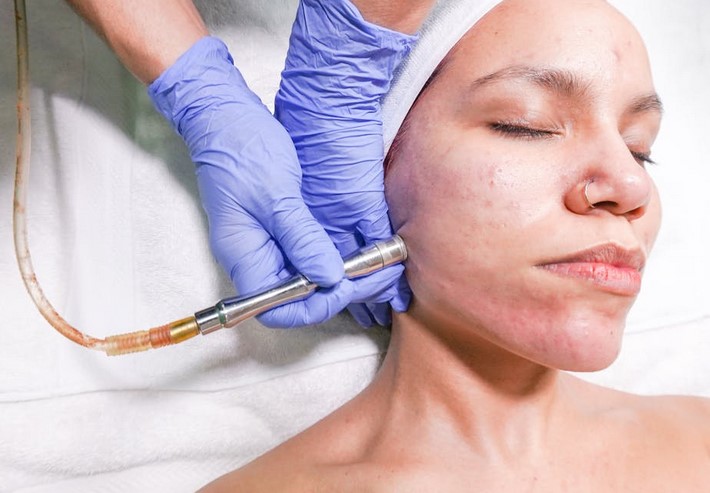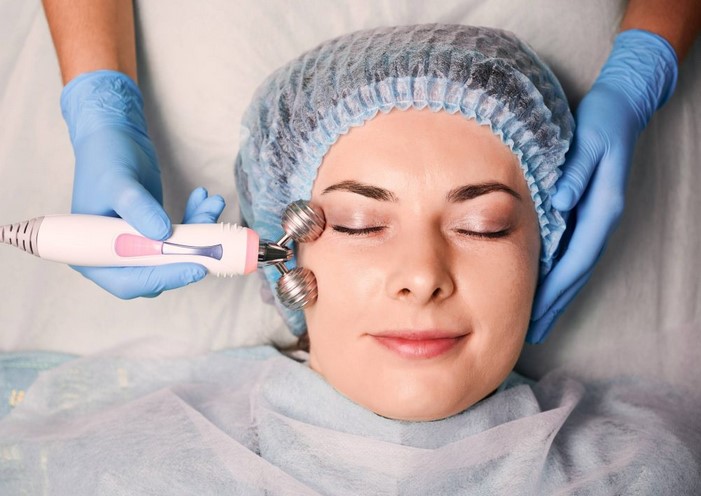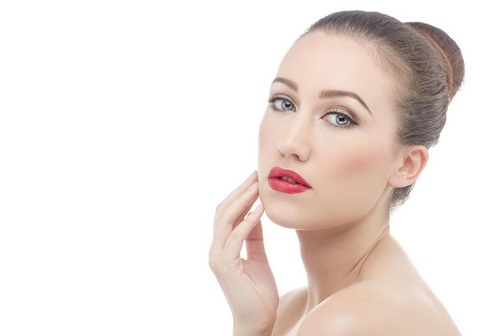
In the world of skincare, one treatment that has gained significant attention for its ability to rejuvenate the skin is microdermabrasion. This minimally invasive procedure involves exfoliating the outermost layers of skin to reveal a smoother, brighter complexion. Microdermabrasion is a go-to treatment for individuals looking to combat dullness, fine lines, and acne scars, making it an ideal option for those wanting to maintain youthful, glowing skin. This article will delve into the many benefits of microdermabrasion, exploring how it works, who can benefit from it, and why it has become a popular choice for achieving smoother, younger-looking skin.
1. What is Microdermabrasion and How Does It Work?
Microdermabrasion is a non-surgical exfoliating treatment that uses fine crystals or a diamond-tipped device to gently remove dead skin cells from the surface of the skin. The procedure stimulates cell turnover, encouraging the skin to shed its outer layer and promote the regeneration of new, healthier skin. It is commonly used to improve the texture and tone of the skin, leaving it looking fresh and renewed.
Types of Microdermabrasion
There are two primary types of microdermabrasion: crystal microdermabrasion and diamond microdermabrasion.
- Crystal Microdermabrasion: In this technique, fine crystals, usually aluminum oxide or sodium bicarbonate, are sprayed onto the skin. A suction device is then used to remove both the crystals and the exfoliated skin cells. This method is effective in addressing skin texture issues, dullness, and even light scarring.
- Diamond Microdermabrasion: Instead of crystals, this technique uses a diamond-tipped wand to exfoliate the skin. It is generally considered gentler than the crystal method, making it ideal for more sensitive skin types. The diamond-tipped wand also allows for more precise treatment, which is beneficial for targeting specific areas, like around the eyes or mouth.
Both methods are designed to be effective, with the key difference being the type of exfoliating agent used.
2. The Benefits of Microdermabrasion
Microdermabrasion is celebrated for its ability to deliver several skin benefits with minimal downtime. Whether you’re looking to treat fine lines, acne scars, or sun damage, this procedure can provide noticeable results. Here are the primary benefits:
1. Smoothens Skin Texture
One of the main reasons people opt for microdermabrasion is to improve the texture of their skin. By sloughing off dead skin cells, the procedure helps smooth rough patches, leaving the skin looking softer and more even. This is particularly beneficial for those who have bumpy or uneven skin due to conditions like keratosis pilaris or sun damage.
2. Reduces Fine Lines and Wrinkles
As we age, the skin’s natural collagen production slows down, leading to the formation of fine lines and wrinkles. Microdermabrasion stimulates collagen production by encouraging cell turnover. This not only helps reduce the appearance of fine lines and wrinkles but also promotes a more youthful, plump skin texture. For individuals looking for a non-invasive anti-aging treatment, microdermabrasion offers a great option.
3. Diminishes Hyperpigmentation and Sun Damage
Sun exposure can lead to hyperpigmentation, resulting in dark spots, age spots, and uneven skin tone. Microdermabrasion helps fade these dark spots by removing the damaged outer layers of skin and allowing new, even-toned skin to emerge. The procedure also helps improve skin tone overall, making it a popular choice for those with sun-damaged skin.
4. Helps with Acne and Acne Scarring
Acne can leave behind unsightly scars and marks long after the blemishes themselves have cleared up. Microdermabrasion can be an effective treatment for both active acne and post-acne scars. The exfoliation process helps to unclog pores, reduce acne breakouts, and promote the healing of existing acne scars. Regular treatments can lead to smoother skin and a reduction in the appearance of acne scarring over time.
5. Increases Skin Absorption of Skincare Products
By removing the top layer of dead skin cells, microdermabrasion improves the skin’s ability to absorb topical skincare products. After the procedure, your skin will be better equipped to soak up serums, moisturizers, and treatments, ensuring that these products work more effectively. This makes microdermabrasion a great complement to your skincare routine.
3. Who Can Benefit from Microdermabrasion?
While microdermabrasion is suitable for most skin types, there are certain factors to consider before undergoing the procedure.
Skin Types and Conditions That Benefit
- Dull, Dry Skin: Individuals with lackluster, dry skin will benefit from the brightening effects of microdermabrasion. The procedure provides an instant glow by removing dead skin cells and allowing fresh skin to surface.
- Fine Lines and Wrinkles: As a non-invasive alternative to Botox or fillers, microdermabrasion is great for those looking to smooth fine lines and maintain a youthful appearance.
- Acne-Prone Skin: Microdermabrasion can reduce clogged pores and help clear up acne. It is most effective for mild to moderate acne but may not be suitable for those with active cystic acne, as the treatment could irritate the skin.
Precautions
- Sensitive Skin: Individuals with sensitive or highly reactive skin may want to approach microdermabrasion with caution. While diamond microdermabrasion is gentler than the crystal version, both methods can cause irritation if the skin is overly sensitive or inflamed.
- Active Skin Conditions: If you have active skin conditions like eczema, rosacea, or psoriasis, it’s best to consult with a dermatologist before opting for microdermabrasion, as the procedure can exacerbate these conditions.
Microdermabrasion is a versatile and effective treatment that offers a variety of benefits for those looking to achieve smoother, younger-looking skin. By exfoliating the outer layers of skin, it helps diminish fine lines, acne scars, hyperpigmentation, and sun damage, leaving the skin looking fresh and revitalized. Whether you have dry, dull skin or are looking to reduce the appearance of acne scarring, microdermabrasion can help you achieve the glowing, youthful skin you desire. However, it is essential to consider your skin type and any underlying conditions before undergoing the treatment to ensure the best results. When performed correctly, microdermabrasion can provide significant improvements in skin texture and appearance, making it a popular choice for maintaining healthy, youthful skin.

